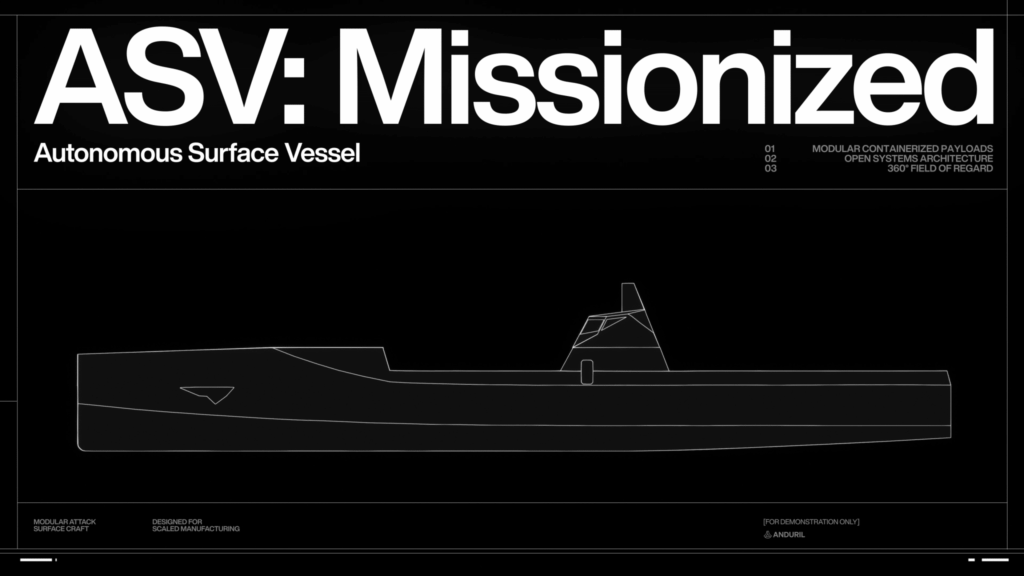
In a significant move to enhance maritime capabilities, Anduril Industries and HD Hyundai Heavy Industries have announced a partnership to design and produce a new class of dual-use Autonomous Surface Vessels (ASVs). This collaboration aims to merge HD Hyundai’s renowned shipbuilding expertise with Anduril’s cutting-edge software-defined autonomy and mission systems integration.
The joint effort is set to develop a modular family of surface vessels for both commercial and defense applications, including a variant specifically tailored to meet the U.S. Navy’s requirements under the Modular Attack Surface Craft (MASC) program. This initiative is part of a broader strategy to maintain maritime dominance amidst growing global challenges.
Strategic Importance of Surface Dominance
The announcement comes at a time when control of the surface domain is increasingly critical for maritime power. With China outbuilding the American fleet at a rate of three to one, and using its coast guard and maritime militia to assert control over the Pacific, the stakes are high. Meanwhile, Russia continues to challenge Western access in the Black Sea and Arctic regions.
The economics of defending commercial shipping using traditional military assets are becoming unsustainable. To address these challenges, the United States must regain the ability to rapidly build, deploy, and modernize its naval fleet. The Navy’s MASC program represents a pivotal shift towards a distributed, autonomous, hybrid fleet designed to operate in contested waters.
The ASV: Modular and Mission-Focused
Anduril and HD Hyundai’s ASV is designed for modularity, speed of production, and mission flexibility. Its open-architecture design allows for interchangeable payloads, enabling the vessel to perform a variety of missions such as intelligence, surveillance, strike, and electronic warfare through rapid reconfiguration. The vessel’s central superstructure offers a 360-degree field of view, ensuring continuous situational awareness.
The ship’s autonomy software integrates propulsion, navigation, and payload control into a unified system, allowing commanders to dynamically adapt missions. This software-defined integration approach is designed to avoid supply chain constraints and vendor lock-in, ensuring flexibility and sustainability. Constructed with steel, the vessel is built for durability and ease of maintenance, leveraging the existing domestic supply base.
Building the Future: From Prototype to Production
The first prototype of the dual-use ASV is currently being fabricated in Korea, utilizing HD Hyundai’s industrial capacity. This phase is crucial for validating designs and integrating propulsion and power systems. Future vessels, including the MASC variant, will be entirely built in the United States.
Anduril has invested significantly in revamping a retired shipyard in Seattle, Washington, at the historic former Foss Shipyard. This facility will serve as the initial U.S. hub for low-rate vessel assembly, integration, and testing of ASVs for the MASC program. The Pacific Northwest, with its rich maritime history and skilled labor force, provides the ideal conditions to rejuvenate American shipbuilding.
Additionally, Anduril and HD Hyundai are collaborating with Hadrian to modernize manufacturing across the supply chain. Hadrian’s precision automation and rapid fabrication capabilities will be instrumental in producing structural and mechanical components, reducing lead times, and enabling high-volume production.
Implications and Future Prospects
This development follows a growing trend of integrating advanced technology into naval operations. The partnership between Anduril and HD Hyundai not only aims to extend the Navy’s reach but also supports evolving concepts for distributed maritime operations. By investing in domestic production capabilities, the United States is poised to strengthen its maritime resilience and maintain strategic superiority.
As the global maritime landscape continues to evolve, the successful deployment of these autonomous vessels could set a new standard for naval operations. The implications for future naval strategy are profound, potentially reshaping how maritime power is projected and maintained in the coming decades.
With the first prototype set to embark on its maiden voyage soon, all eyes will be on the outcomes of this ambitious collaboration. The success of this venture could pave the way for further innovations in autonomous maritime technology, reinforcing the United States’ position as a leading maritime power.






